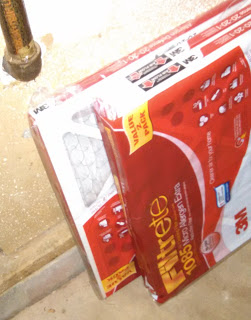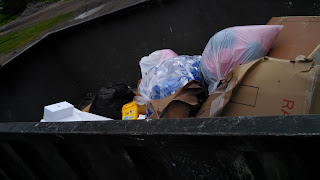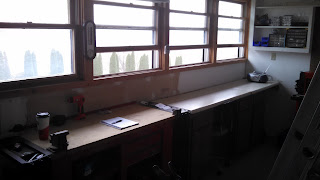Avoid Expensive Air Conditioner Repairs!
 |
Avoid Expensive Air Conditioner Repair
Image Source: Dr. Penny Pincher |
Summer has arrived, and that means it is time for central air conditioning if you have it, and if you are lucky enough to have it working. As you'll see, I have not always been so lucky...
Growing up in an old farmhouse on a small farm, we had no air conditioning. We had fans in the bedrooms and in the living room. The downstairs wasn't too bad, but the upstairs bedrooms were pretty warm at night, even with fans going. When I was about 14 we installed a window air conditioner in the living room. I don't remember how much that cost, but I think it was about $100, and I know it used a lot of electricity. We ran it on a few of the hottest days of the year and it made a big difference.
Tips to Keep Your Air Conditioner Working
Since then, I have owned several houses and all but one of these had a central air conditioner. Almost every central air conditioner I have owned has had some trouble. In general, there some simple things you can do to avoid trouble with your central air:
- Change the furnace filter regularly. If the filter is dirty, it reduces the air flow and reduces the cooling effectiveness. If you don't remember when you last changed it, it is probably due for a change...
- Trim back plants growing around your A/C unit to allow the heat exchange to work efficiently.
- Use fans instead of central air when it makes sense. A fan right next to you can keep you cool, and using a fan is less expensive and saves wear and tear on your expensive A/C unit.
 |
Installing New Furnace Filters Can Avoid A/C Issues
Image Source: Dr. Penny Pinche |
Each time I have called a repairman to troubleshoot the central air, it has cost more than the window air conditioner that we bought growing up- just for the repair! A new central air conditioner costs about $3,000 to install, depending on the size. Repairing a central air conditioner costs $100 to $300 or more, depending on the problem.
 |
This is Where Furnace Filters are Installed
Image Source: Dr. Penny Pincher |
Air Conditioner Repair Incidents
Following are accounts of the incidents I have had with my air conditioner over the years, and an explanation of each problem. Hopefully this will help you avoid some expensive service calls or at least understand what could be wrong with your air conditioning.
A/C Incident 1: A/C running, but not cooling. We moved into a house in the winter time and tried to turn on the A/C when summer came around. Everything seemed to be running, but it just wasn't cooling. I called a furnace repairman to come and check it out. This system had a furnace filter installed in the ceiling, which I did not find when I was checking for problems. Simply changing the very dirty filter made the A/C work well. This service call was around $100!
How to avoid expensive repair: Make sure you find your furnace filter and change it!
A/C Incident 2: A/C not running. My wife was 9 months pregnant. It was July and very hot, with temperatures running over 100 degrees at nearly 100% humidity. This was a house that I just bought, and I wasn't very familiar with the infrastructure. The A/C stopped working mid-morning on the 4th of July. I wanted to wait until after the holiday weekend to call a repairman since it was a holiday, but my wife was pretty uncomfortable anyway and it was only getting hotter, so I called a repairman right away.
The problem turned out to be a blown fuse in the fuse box right next to the A/C unit outside. I checked the circuit breaker panel inside, but it didn't occur to me that there would be a separate fuse box outside with glass fuses. The repair bill was around $200!
How to avoid expensive repair: If your A/C unit stops running, check for a fuse box next to the unit. You can probably get new fuses for about $1 each...
A/C Incident 3: A/C running, but not cooling. We lived at an old farmhouse that we were fixing up. One of the first improvements we made was to add a central air unit. It worked great for 3 or 4 years and one summer it just wasn't cooling. I checked the furnace filter- but it was totally clean. We didn't want to spend money that year to call a repairman, so we went all summer without using the A/C. The next spring it still wasn't working. I had been reading about A/C troubleshooting on the Internet and had isolated the problem to inside the plenum. I wasn't willing to cut into it- we can live without A/C, but I didn't want to risk ruining the furnace. Heating is not optional in Iowa...
So, after a year without working A/C, I finally called the repairman. I was right that the problem was in the plenum. Somehow, a bunch of dog and cat fur had accumulated inside and was almost completely blocking the flow of air. Apparently a furnace filter had gotten very humid and collapsed, leaving the air return unfiltered for some time. We had the return air cover off while working on some things, so tons of fur got into the furnace. After the repairman removed the fur mat that had formed and sealed the plenum back up, it was good as new. It cost over $300 for this repair!
How to avoid expensive repair: Make sure your furnace filter is installed correctly and is in good condition. Dirt and fur can cause real problems if they get into your plenum.
A/C Incident 4: A/C not running. This incident happened at the farmhouse as we were selling it and moving out. We needed to repair the A/C so it would be working for the buyer. The problem was that a mechanical component failed in the air conditioner. I didn't pay much attention to what it was since we were moving out. This repair cost about $150.
How to avoid expensive repair: Some repairs cannot be avoided-if your A/C has a mechanical failure, it will need new parts.
No More A/C Problems!
This is my second summer living at my current house and I have not had any trouble at this house with my air conditioner... not yet anyway...
Good luck staying cool this summer, whether you use a fan, window air conditioner, or central A/C.
Copyright © 2015 by Dr. Penny Pincher. All Rights Reserved. Privacy Policy
















